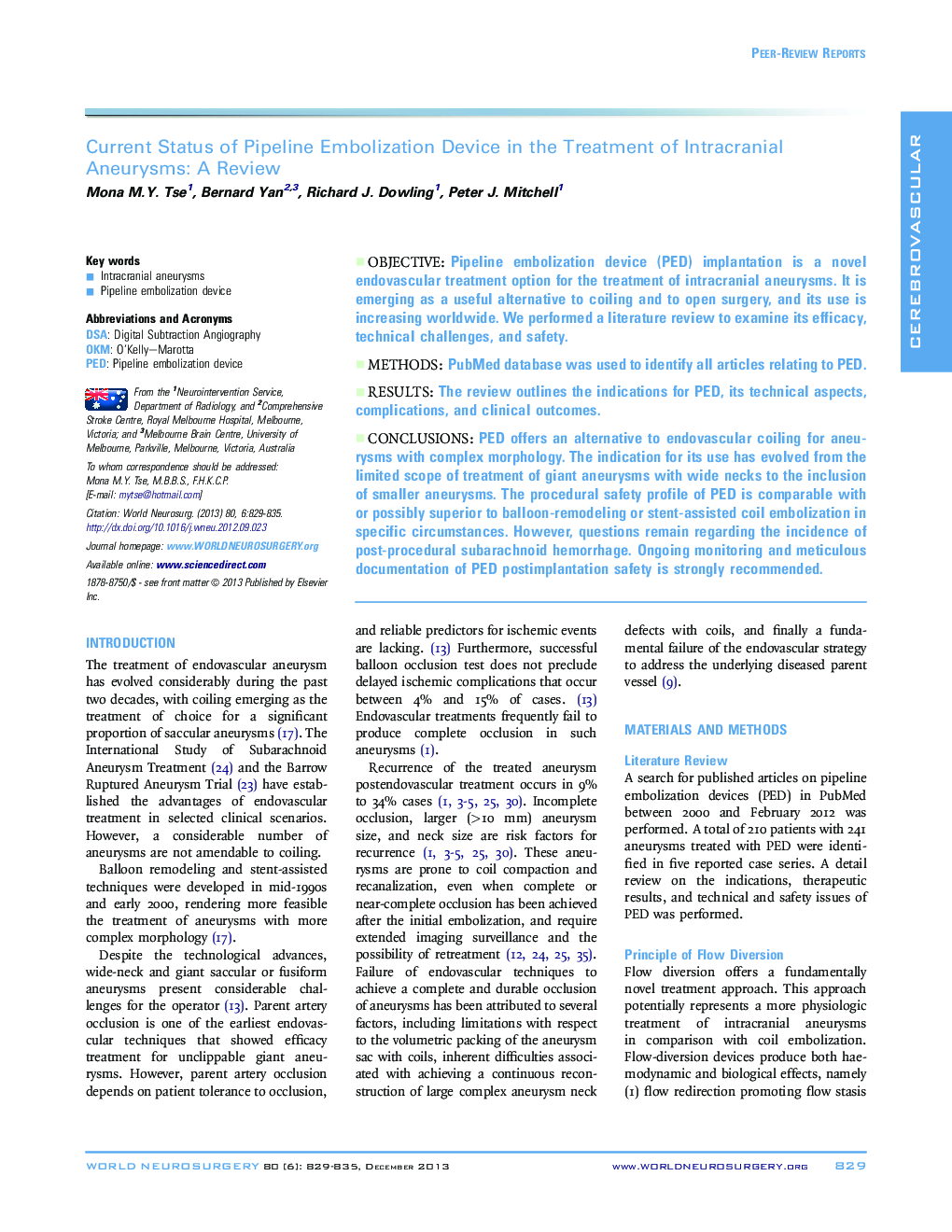| Article ID | Journal | Published Year | Pages | File Type |
|---|---|---|---|---|
| 3095802 | World Neurosurgery | 2013 | 7 Pages |
ObjectivePipeline embolization device (PED) implantation is a novel endovascular treatment option for the treatment of intracranial aneurysms. It is emerging as a useful alternative to coiling and to open surgery, and its use is increasing worldwide. We performed a literature review to examine its efficacy, technical challenges, and safety.MethodsPubMed database was used to identify all articles relating to PED.ResultsThe review outlines the indications for PED, its technical aspects, complications, and clinical outcomes.ConclusionsPED offers an alternative to endovascular coiling for aneurysms with complex morphology. The indication for its use has evolved from the limited scope of treatment of giant aneurysms with wide necks to the inclusion of smaller aneurysms. The procedural safety profile of PED is comparable with or possibly superior to balloon-remodeling or stent-assisted coil embolization in specific circumstances. However, questions remain regarding the incidence of post-procedural subarachnoid hemorrhage. Ongoing monitoring and meticulous documentation of PED postimplantation safety is strongly recommended.
